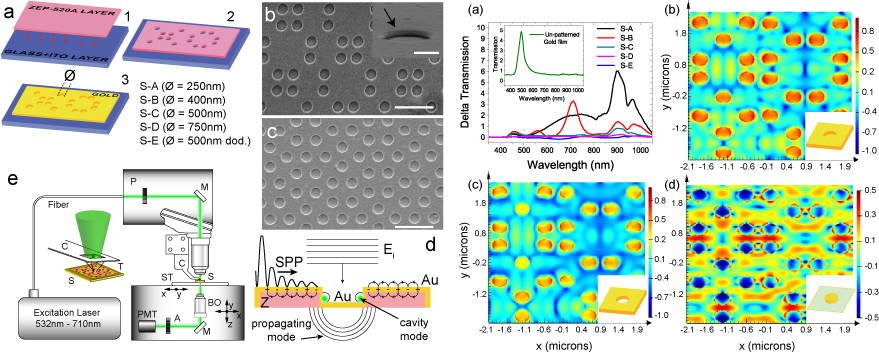R. Dhama, V. Caligiuri, L. Petti, A. Rahimi Rashed, M. Rippa, R. Lento, R. Termine, H. Caglayan, A. De Luca
†Department of Physics, University of Calabria and CNR Nanotec, S. S. di Cosenza, 87036 Rende, Italy
‡CNR, Institute of Applied Sciences and Intelligent Systems, 80072 Pozzuoli, Italy
§Laboratory of Photonics, Tampere University of Technology, 33720 Tampere, Finland
Abstract
Plasmonic quasi-periodic structures are well-known to exhibit several surprising phenomena with respect to their periodic counterparts, due to their long-range order and higher rotational symmetry. Thanks to their specific geometrical arrangement, plasmonic quasi-crystals offer unique possibilities in tailoring the coupling and propagation of surface plasmons through their lattice, a scenario in which a plethora of fascinating phenomena can take place. In this paper we investigate the extraordinary transmission phenomenon occurring in specifically patterned Thue−Morse nanocavities, demonstrating noticeable enhanced transmission, directly revealed by near-field optical experiments, performed by means of a scanning near-field optical microscope (SNOM). SNOM further provides an intuitive picture of confined plasmon modes inside the nanocavities and confirms that localization of plasmon modes is based on size and depth of nanocavities, while cross talk between close cavities via propagating plasmons holds the polarization response of patterned quasi-crystals. Our performed numerical simulations are in good agreement with the experimental results. Thus, the control on cavity size and incident polarization can be used to alter the intensity and spatial properties of confined cavity modes in such structures, which can be exploited in order to design a plasmonic device with customized optical properties and desired functionalities, to be used for several pplications in quantum plasmonics.

